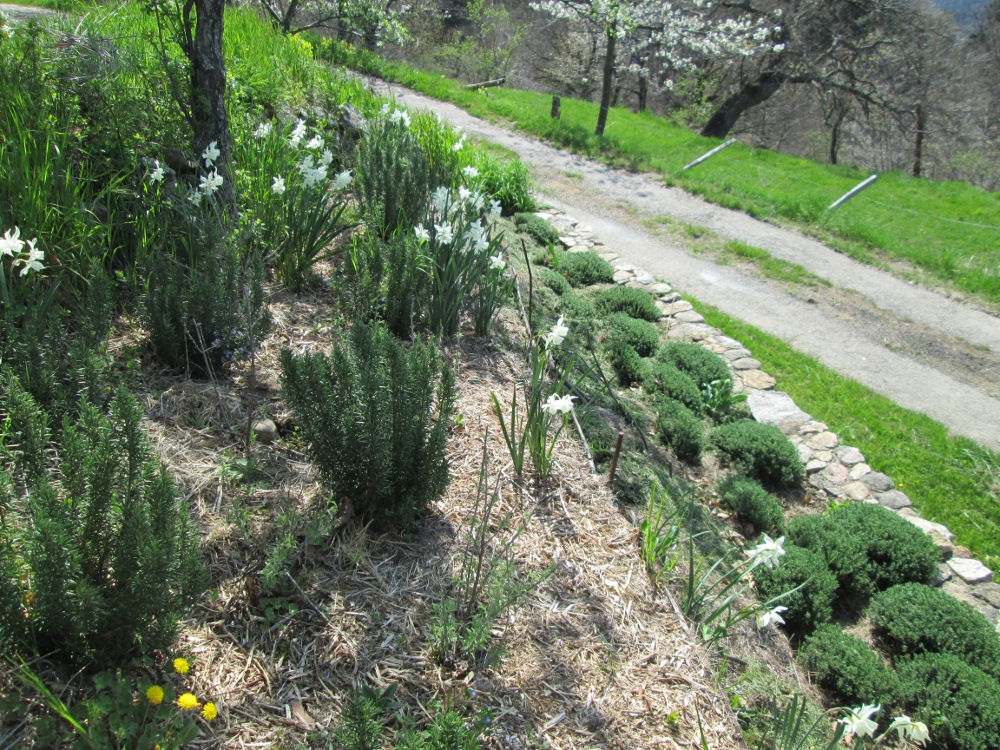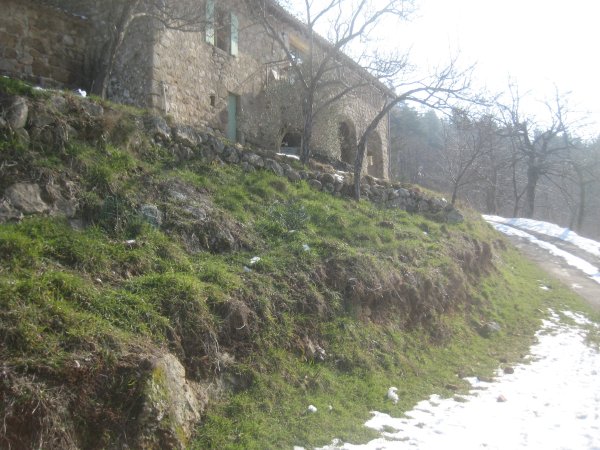The plum bank – creating perfect walls and hedges
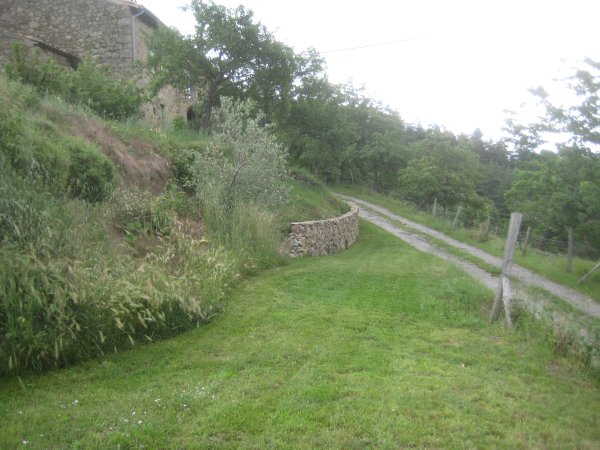 Now here is a sorry tale. Gardening is never static. Things change, evolve and erode. When you get obsessed with design and landscaping, there comes a time when you think everything is perfect and can we please stop growing now, please?
Now here is a sorry tale. Gardening is never static. Things change, evolve and erode. When you get obsessed with design and landscaping, there comes a time when you think everything is perfect and can we please stop growing now, please?
I thought that after a few years of work this plum bank was pretty special. It felt fixed. And especially beautiful in spring when the narcissus Thalias were up, the Mt Tacoma tulips were just coming out, and the thyme was about to flower.
I will treasure these images of this long bank of garden below the main house.
Because we lost the lot in the flood.
But before I start to blubber and weep, here is the story of an interesting process is building walls and then having to settle for hedges.
When you drive up to the farm you catch a sight of the imposing stone house, and a steep slope below it, home to an assortment of not very prolific plum trees.
In the beginning the slope was an eroded pile of dirt, held up by brambles and hardly offering a pleasing sight to the first time visitor.
Bit of rock kept falling down onto the road; making it a fun rally course for the uninitiated.
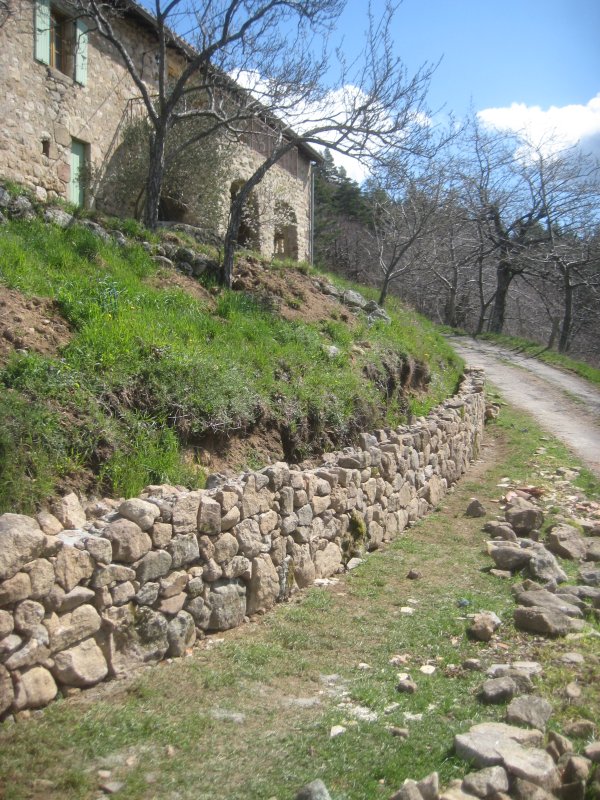 So once the big walls were up along the huge pool bank just around the corner, it was time to empty the bank account again and get another wall built in its place.
So once the big walls were up along the huge pool bank just around the corner, it was time to empty the bank account again and get another wall built in its place.
By now Nicolas, our stone mason, had been building walls off and on for two years.
I had the technique down – and was always a willing builder’s mate. I would fetch rocks and stones, grade them by size and pile them up behind the mason as he worked.
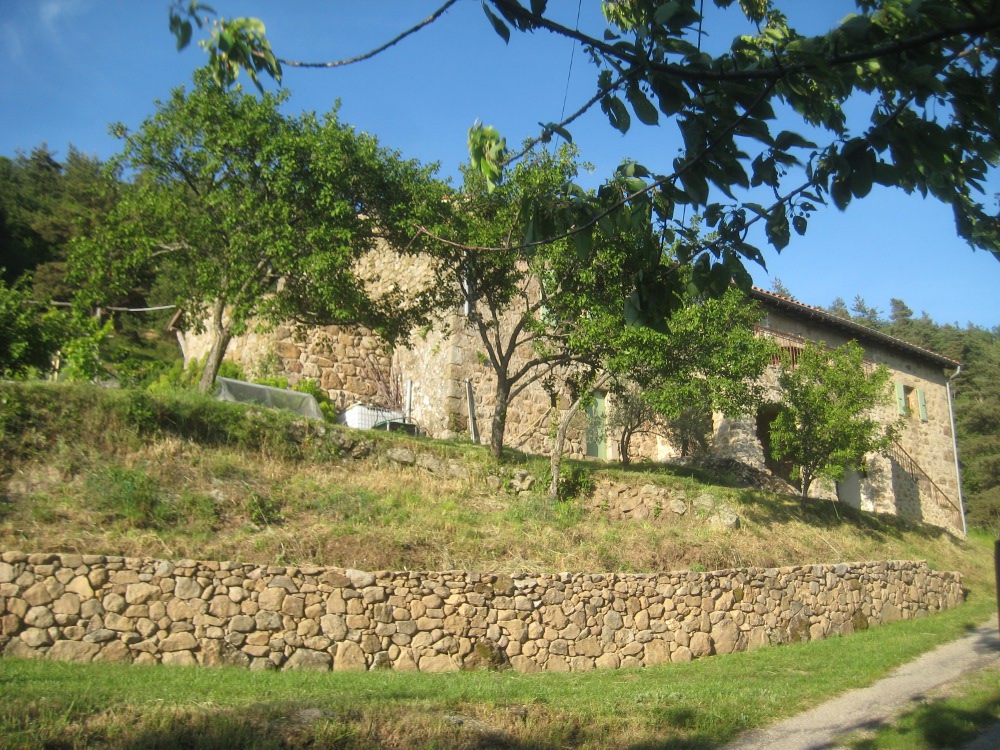 It was fascinating to see how these walls went up. And how on earth did he find the flat stones for the tops? I never really noticed them on my foraging missions around the farm.
It was fascinating to see how these walls went up. And how on earth did he find the flat stones for the tops? I never really noticed them on my foraging missions around the farm.
We were all delighted with the finished product. A handsome wall to complement the stone of the house.
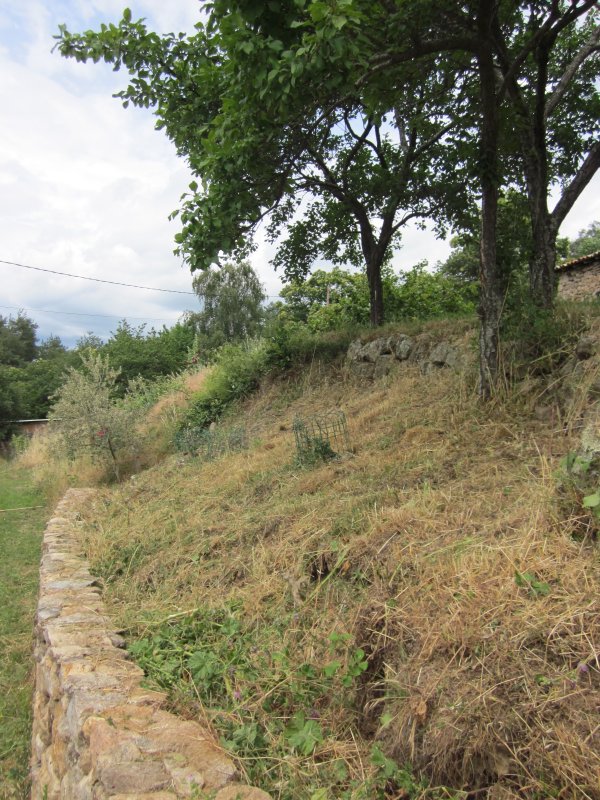 All I needed to do was find a way to landscape the bank.
All I needed to do was find a way to landscape the bank.
I tried a few things over the years, but in the end decided it needed to be a terrace of two parts.
The top larger bed and the long bed right in front of the stones for a single species of plant.
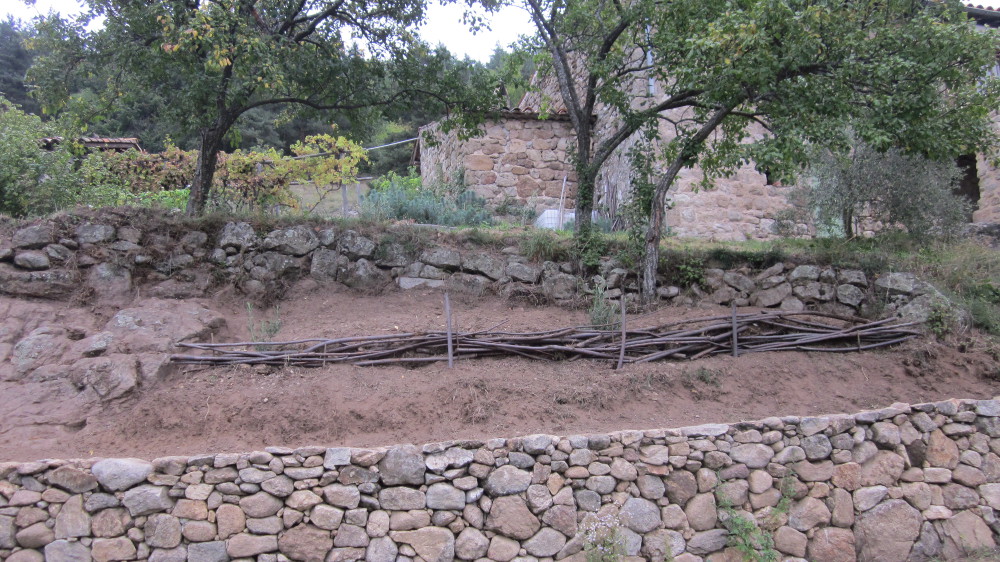 Thyme. What’s not to love about this fantastic plant? It is cheap and perennial, flowers like mad in spring, attracts bees, can but cut back hard and has a fantastic scent when crushed.
Thyme. What’s not to love about this fantastic plant? It is cheap and perennial, flowers like mad in spring, attracts bees, can but cut back hard and has a fantastic scent when crushed.
First I had to take all the grass and brambles off and get back to bare earth. I never was very good at horizontal chestnut hedging – you can see my grim efforts in this shot. But I knew that I was going to cram the space with plants.
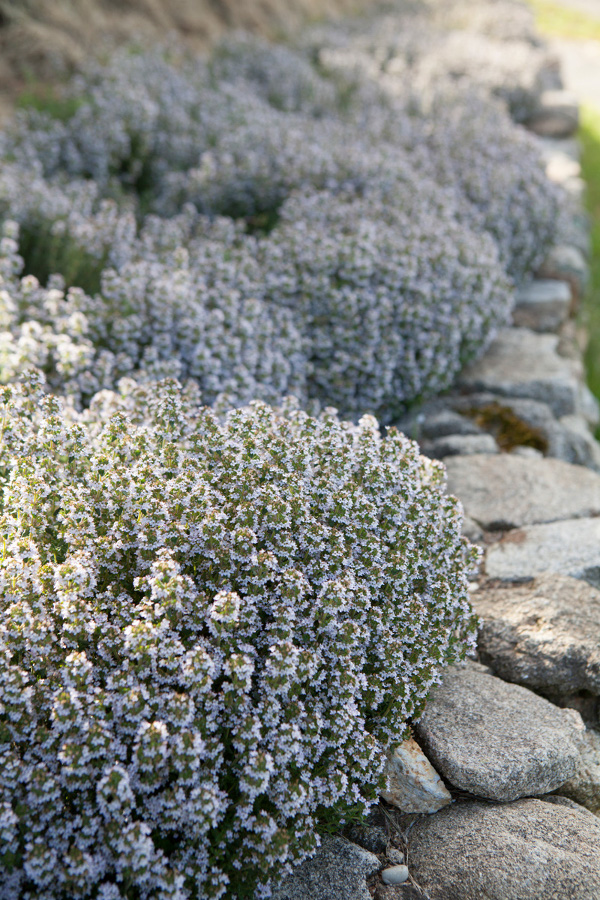 And my selection became very minimalist indeed. The thymes along the bottom edge (there were 55 of them in all) and then for the top, rosemary and perovskia (Russian sage). And bulbs. And mulch.
And my selection became very minimalist indeed. The thymes along the bottom edge (there were 55 of them in all) and then for the top, rosemary and perovskia (Russian sage). And bulbs. And mulch.
I wanted it to be simple. And it looked great.
I did have a bit of trouble with all the suckering plums trying to push their way through the bank.
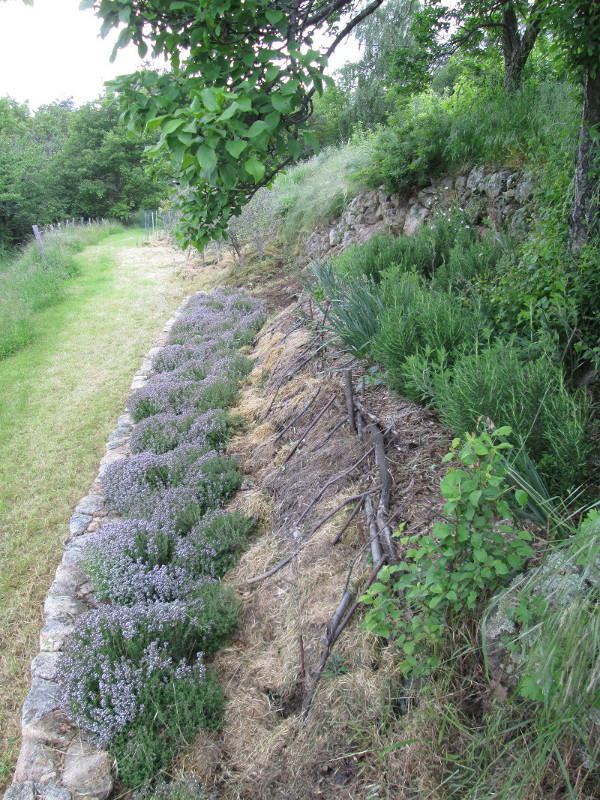 But it was ever thus. Plums and the plum family – my least favourite fruit. I loathe their suckering habit.
But it was ever thus. Plums and the plum family – my least favourite fruit. I loathe their suckering habit.
But back to the bank.
It fell down in the flood.
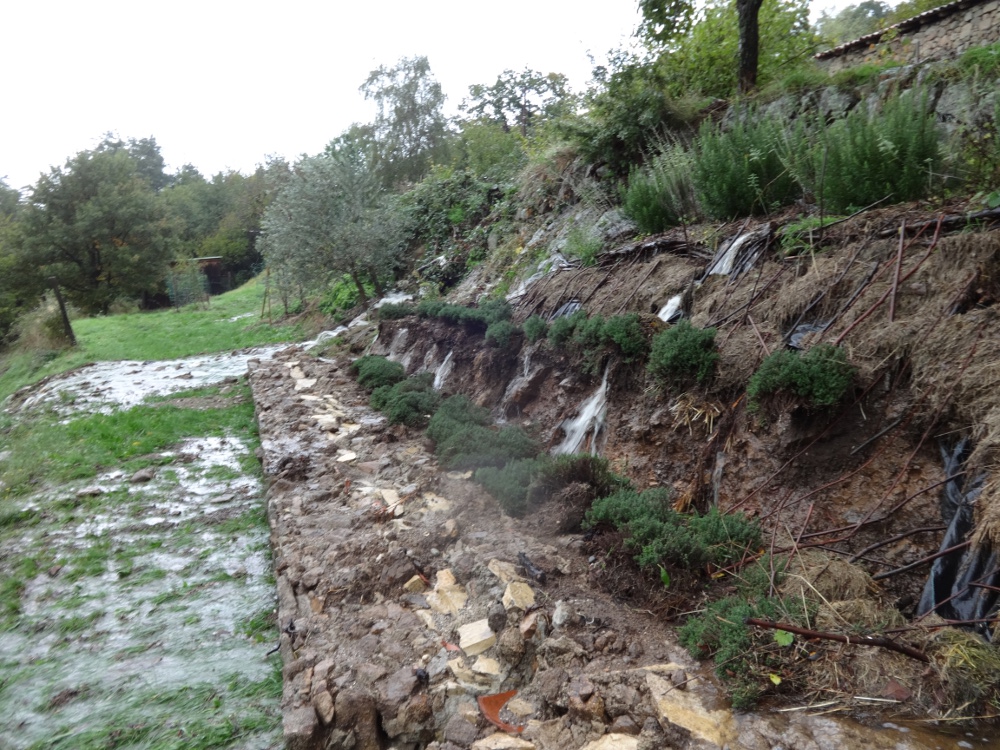 There were no special drainage pipes laid behind the huge wall. Nor were there any in the wall to drain excess water. The simple reason being whoever expected a wall of water to come roaring down off the mountain and cause a 15 metre wall to come crashing down?
There were no special drainage pipes laid behind the huge wall. Nor were there any in the wall to drain excess water. The simple reason being whoever expected a wall of water to come roaring down off the mountain and cause a 15 metre wall to come crashing down?
It was such a shock when we walked around the property after the October 2013 flood.
At first I couldn’t quite work out what I was seeing. And then the shock hit me. We’ve lost this beautiful wall. And all the plants beside it.
I rescued the thyme plants; heeling them into the potager for a week, and then deciding they could do to fill a huge gap in the newly created shade garden bank. All its topsoil ended up in the swimming pool.
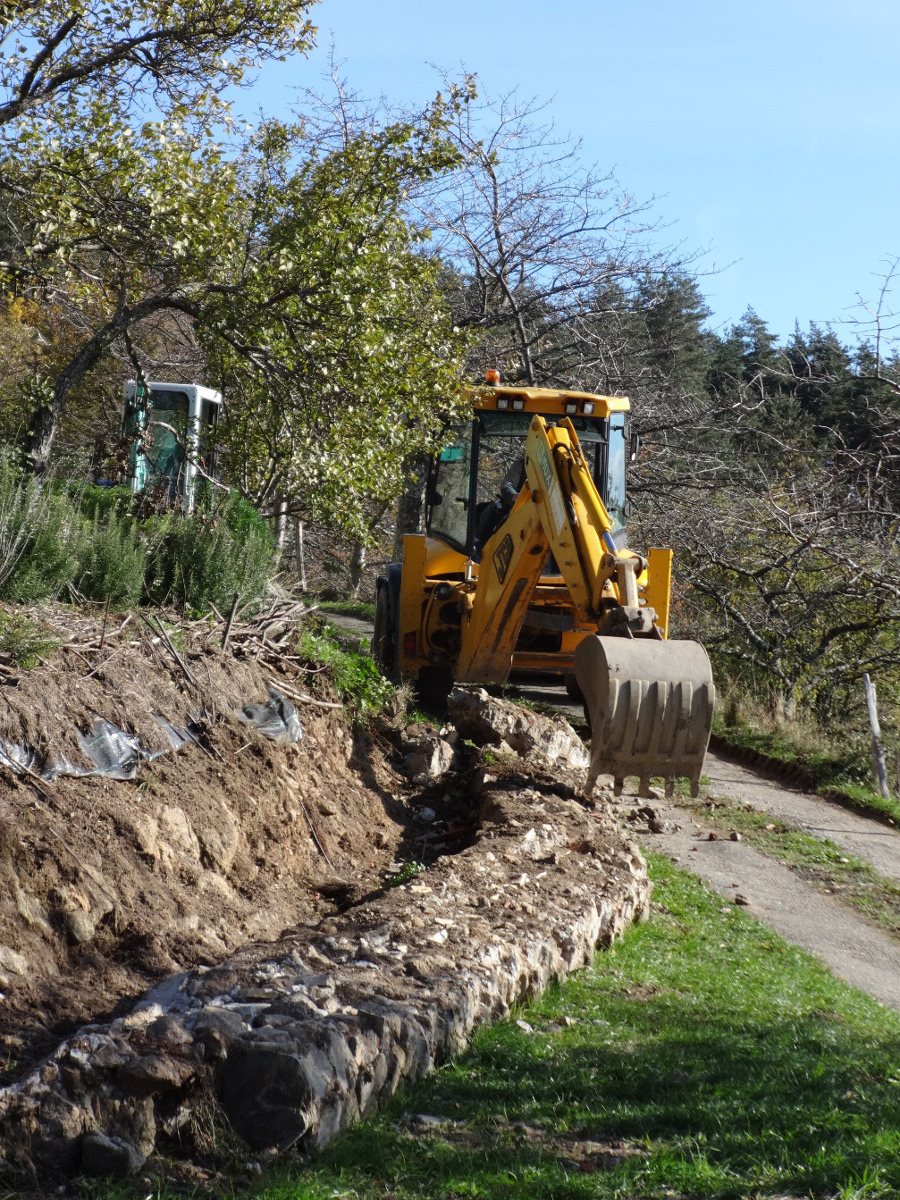
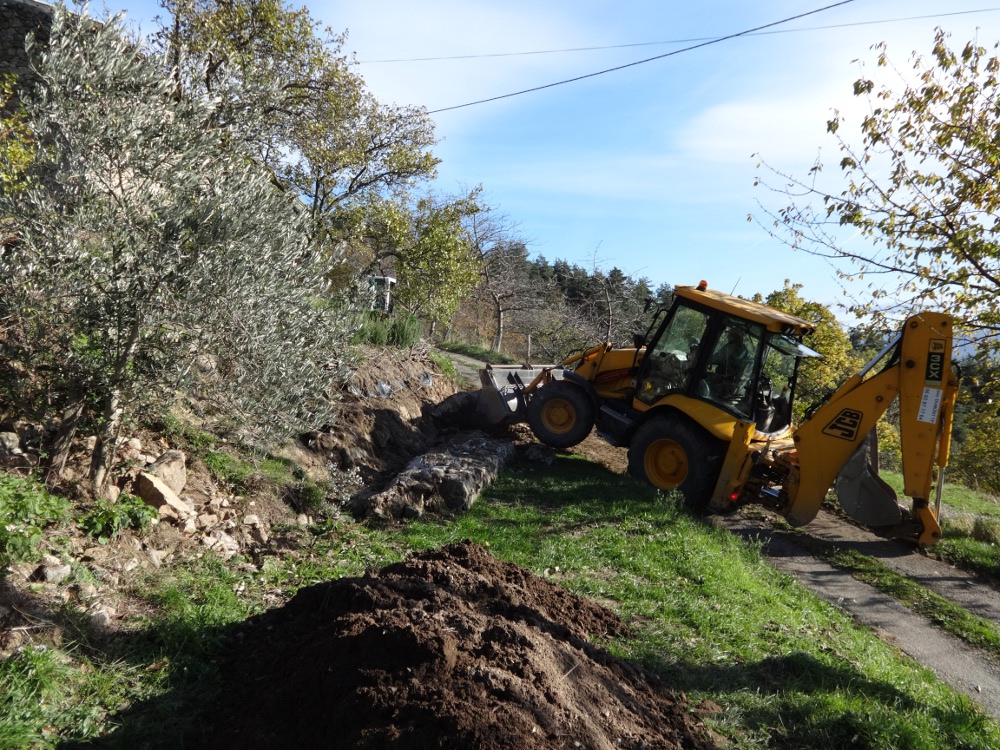
I couldn’t leave the plum bank looking so wretched.
But first I had to shore up the soft fruit orchard bank just to the left of this rubble field. It was more pressing.
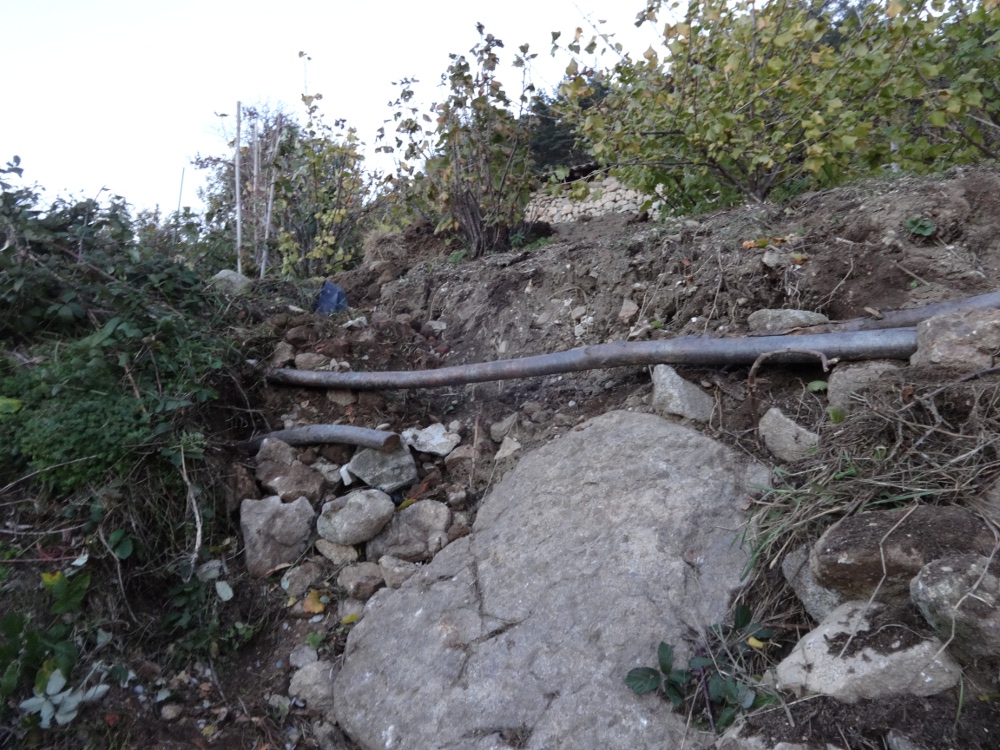
Our friends Bernard and Manu were busy digging all the soil out of the swimming pool so I just redirected a few dozen barrow loads to this part of the garden.
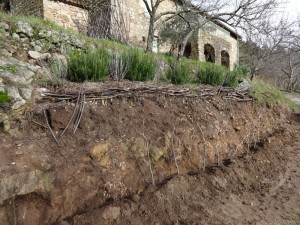
And then considered what to do. We couldn’t build another wall. Expense and bitter experience put paid to that. So the only alternative was hedging.
I needed something to hide the hideous eroded bank behind. It was like looking back eight years to when we began.
Hornbeams (carpinus betulus) were the perfect solution; they grow well around here. They are drought tolerant, attractive. And best of all, they don’t lose their leaves in winter, even if when they turn brown.
So I could count on a bit of disguise even in the winter months.
And when my cousins Gordie and Melissa were visiting we finished the final design. We stacked hundreds of thin chestnut sticks behind the hedge to hide the bank even more.
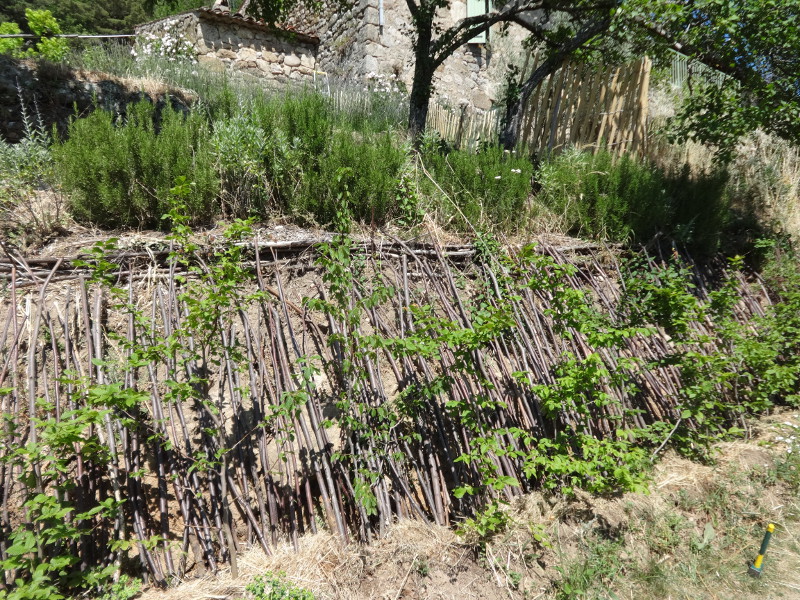
The hornbeams are small but doing their job. But we will need to wait a few years to see them plump out and do a proper hedge job. Do I miss my lovely stone wall and plants? Oh that I had my thyme again.
